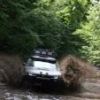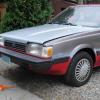Search the Community
Showing results for tags 'Legacy Outback'.
-
On our 2005 Outback, our backup lights have been collecting water during rainstorms. Usually it appears as heavy condensation or fog, but after a big rain when I open the tailgate hatch and remove the backup light bulb, water runs out of the assembly. So far it has not shorted out the electrical out...
-
Hi Folks. Previously my partner had the same year & model & though we're in Vermont where cars rust to bits, we got lucky enough to find another which came here from CA. & got well treated before rust could set in. We're very happy with it but for several things: 1 - The dome light doesn't com...
- 9 replies
-
- dome light
- alarm
-
(and 2 more)
Tagged with:
-
I thought this dead horse could use a little more beating. I would like to lift my 96 Legacy Outback. With the intention of putting on larger tires, as you do. Currently my 205 70 15 tires are about a 1/4" from the rear strut spring perch. (i think that's what it's called). Which year struts...
- 4 replies
-
- lifted outback
- struts
-
(and 2 more)
Tagged with:
-
Hello all, I am absolutely certain I am not the first, nor will I be the last to come on and ask about this particular issue pertaining to these transmissions. However I cannot find a clear answer from browsing other posts and forums, so here goes. My '02 Outback wagon has a 5-speed out of an...
- 11 replies
-
- WRX
- Manual Transmission
-
(and 2 more)
Tagged with:
-
Hi everyone, I'm sure there are plenty of threads out there discussing suspension lifts on the BG body Legacies. I don't want to add to a stale, broad topic, but simply to document my process in the hopes of helping anyone in the future do what I did and help anyone that has questions. Feel free to...
- 3 replies
-
- how to
- forester struts
- (and 7 more)
-
I can't afford to get ripped off by a "dealership" or mechanic so I came to see if I can be a little more informed on whats going on to my 1996 legacy outback. (I love these cars, they are reliable and durable) Thanks so much in advance, and please correct me if I am wrong. So I have been on a road...
- 7 replies
-
- 1
-

-
- 1996
- legacy outback
- (and 8 more)
-
I bought a 2.2 L manual 1996 subaru legacy outback last year. It consumed a lot of oil and puffed a little blue smoke coming down steep roads or hills. I flushed the rdiator when I got it, oil and filter change, brake change, valve cover and seal change, air filter. drove it for about 2 months w...
-
My old man's car blew its head gasket according to the dealer. So in an attempt to save a few mortgage payments getting this car's gaskets replaced in a dealer, I figured I could do it myself. Now, I'm no slouch in the mechanic department; I'm wondering if any other members here have done the head g...
- 10 replies










